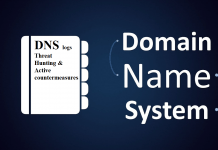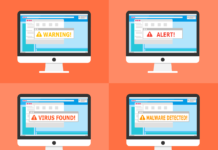As the world of web development constantly evolves, so do the tools and practices that developers rely on to streamline their workflows. Among the most powerful of these tools is GitHub Actions, especially when combined with Laravel, a robust PHP framework. GitHub Actions enables developers to automate their software workflows, integrating with GitHub to run a series of commands after a specific event has occurred within a repository. By utilizing GitHub Actions, Laravel developers can significantly enhance their productivity and deployment quality. Below, we will explore how to effectively leverage this technology for your Laravel projects.
Understanding GitHub Actions for Laravel Development

GitHub Actions is a powerful tool for automating Laravel development workflows, allowing developers to streamline testing, deployment, and issue management directly within their repositories. By responding to events like push or pull requests, these workflows trigger jobs consisting of steps that execute commands or use prebuilt actions. This automation reduces human error and enhances efficiency throughout the software development life cycle.
To get started with laravel github actions, developers should familiarize themselves with YAML syntax, as it’s essential for defining workflows. Exploring documentation and tutorials can provide valuable insights into setting up automated tasks for Laravel projects, helping teams optimize their development processes with minimal manual effort.
Setting Up a Solid CI/CD Pipeline with GitHub Actions and Laravel
A Continuous Integration and Continuous Deployment (CI/CD) pipeline is crucial for Laravel projects, enabling developers to integrate code changes more frequently and reliably. A well-configured pipeline automatically runs tests when code is pushed to the repository, ensuring clean integration before merging.
Setting up a pipeline involves defining a workflow file in the repository’s ‘.github/workflows’ directory, which can handle complex tasks like compiling assets using Laravel Mix. GitHub Actions can automate deployment to various hosting platforms, using environment-specific variables for consistency. Optimizing the pipeline involves breaking down workflows into parallel jobs and implementing conditionals to run specific jobs only when necessary, such as deploying to production only on a push to the master branch.
Managing Secrets and Environment Variables in Laravel GitHub Actions
GitHub Actions is a tool that ensures security in CI/CD pipelines by managing sensitive information like credentials and API keys. These secrets are encrypted environment variables stored within a GitHub repository, allowing secure storage and access without hardcoding them into workflow files or the codebase.
Laravel GitHub Actions allows developers to define secrets in the repository settings and reference them in workflow files, ensuring the security of sensitive information while benefiting from automated processes. It supports environment-specific configuration, allowing developers to dynamically adjust settings based on the deployment environment. Regular audits of secrets and environment variables are recommended to prevent security risks.
Streamlining Testing and Deployment in Laravel Using GitHub Actions

Laravel’s built-in support for automated testing suites allows developers to automate the execution of these tests using the Laravel framework’s artisan commands. This ensures that new changes don’t break existing functionality. Testing workflows typically involve setting up the application environment, seeding databases, running tests, and reporting outcomes. GitHub Actions provides flexibility for deployment, allowing Laravel developers to script their processes to various locations.
This encourages a culture of ‘shipping small’, reducing the pain of large-scale releases and allowing users to enjoy the fruits of development sooner. This approach also leads to a more manageable and interactive troubleshooting process. GitHub Actions can be used to deploy to servers via SSH, rsync, Docker containers, or Platform-as-a-Service providers.
Best Practices for Monitoring and Maintaining GitHub Actions Workflows in Laravel Projects
Regular monitoring and maintenance of GitHub Actions workflows are crucial for a smooth CI/CD process for Laravel projects. Developers must monitor executions, monitor for failures, and adjust workflows as the project evolves. Tools like the Actions tab and notifications make monitoring easy. Maintaining GitHub Actions involves updating to latest versions, optimizing workflows to reduce run-time, and avoiding unnecessary resource consumption.
Caching for dependencies and docker layers can reduce execution times and costs. Splitting complex workflows into manageable ones improves readability and troubleshooting. Documenting the intended behavior of each GitHub Action within the project’s repository aids onboarding new team members and understanding the CI/CD process. Automated reminders or scheduled checks can ensure workflows are up to date, align with best practices, and remain efficient.
Altogether, GitHub Actions presents a powerful tool for automating and perfecting the delivery pipelines of Laravel applications. By setting up thorough testing and deployment strategies, diligently managing secrets, and maintaining workflows, development teams can achieve faster, safer, and more consistent results. Embracing GitHub Actions within Laravel projects stands as a testament to a team’s commitment to operational excellence and modern development practices.



































